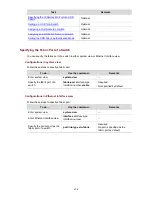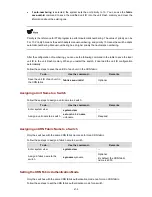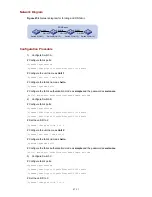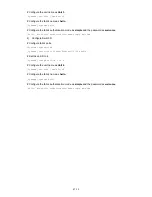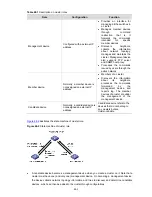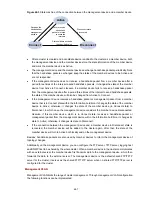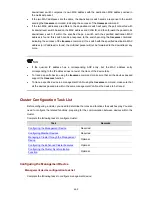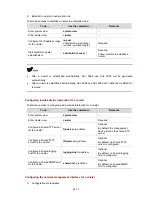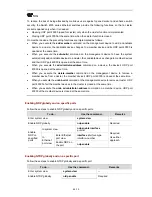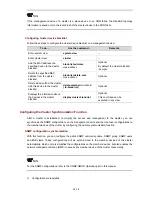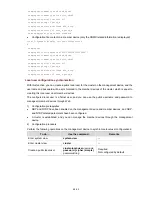
Figure 48-3
State machine of the connection between the management device and a member device
Receives the
handshake or
management
packets
Fails to receive
handshake
packets in three
consecutive
intervals
State holdtime exceeds
the specified value
Disconnect state
is recovered
Active
Connect
Disconnect
z
After a cluster is created and a candidate device is added to the cluster as a member device, both
the management device and the member device store the state information of the member device
and mark the member device as Active.
z
The management device and the member devices exchange handshake packets periodically. Note
that the handshake packets exchanged keep the states of the member devices to be Active and
are not responded.
z
If the management device does not receive a handshake packet from a member device after a
period three times of the interval to send handshake packets, it changes the state of the member
device from Active to Connect. Likewise, if a member device fails to receive a handshake packet
from the management device after a period three times of the interval to send handshake packets,
the state of the member device will also be changed from Active to Connect.
z
If the management device receives a handshake packet or management packet from a member
device that is in Connect state within the information holdtime, it changes the state of the member
device to Active; otherwise, it changes the state of the member device (in Connect state) to
Disconnect, in which case the management device considers the member device disconnected.
Likewise, if this member device, which is in Connect state, receives a handshake packet or
management packet from the management device within the information holdtime, it changes its
state to Active; otherwise, it changes its state to Disconnect.
z
If the connection between the management device and a member device in Disconnect state is
recovered, the member device will be added to the cluster again. After that, the state of the
member device will turn to Active both locally and on the management device.
Besides, handshake packets are also used by member devices to inform the management device of
topology changes.
Additionally, on the management device, you can configure the FTP server, TFTP server, logging host
and SNMP host to be shared by the whole cluster. When a member device in the cluster communicates
with an external server, the member device first transmits data to the management device, which then
forwards the data to the external server. The management device is the default shared FTP/TFTP
server for the cluster; it serves as the shared FTP/TFTP server when no shared FTP/TFTP server is
configured for the cluster.
Management VLAN
Management VLAN limits the range of cluster management. Through management VLAN configuration,
the following functions can be implemented:
48-7


